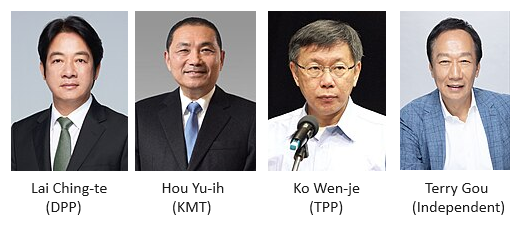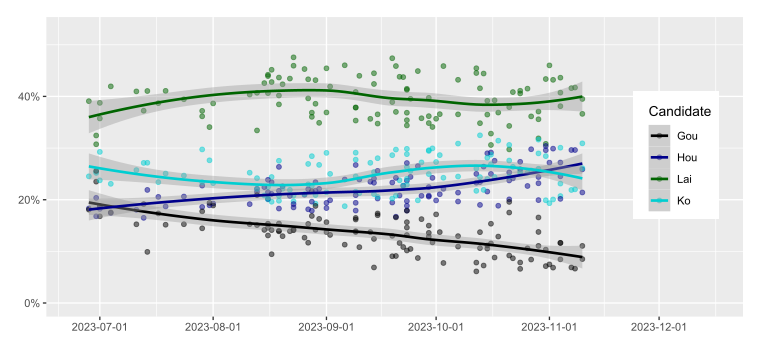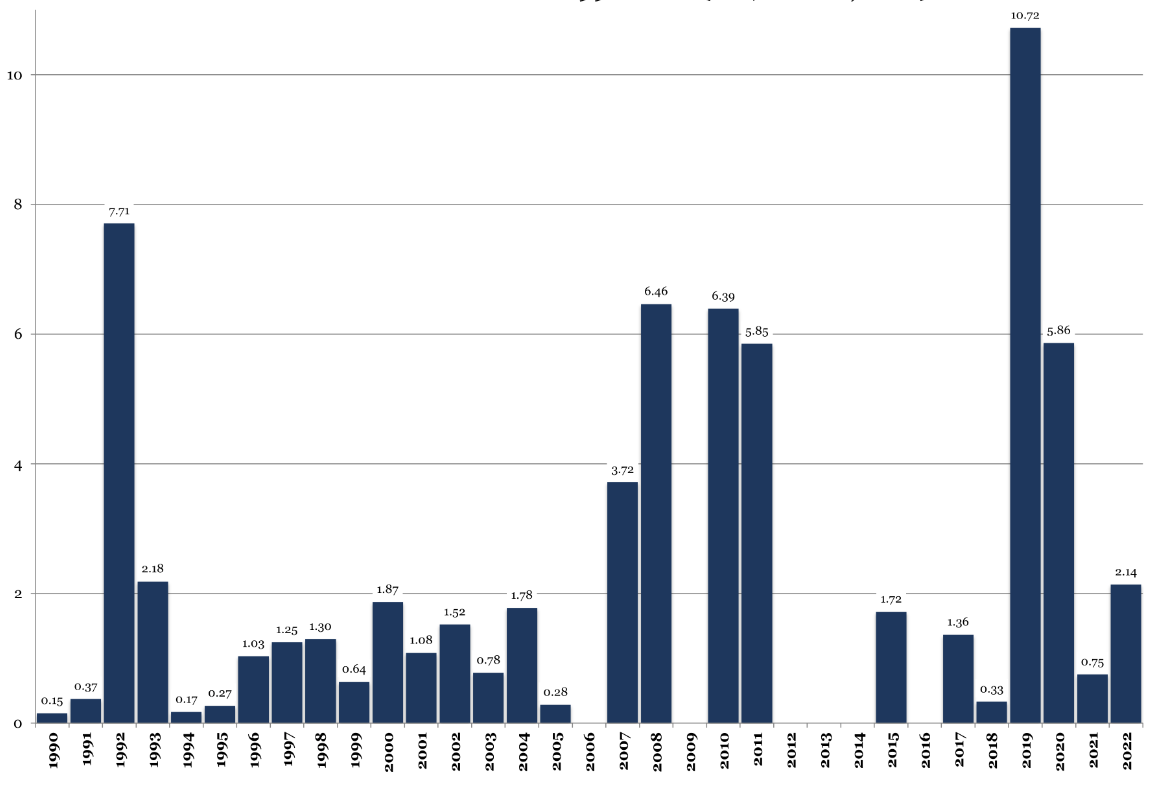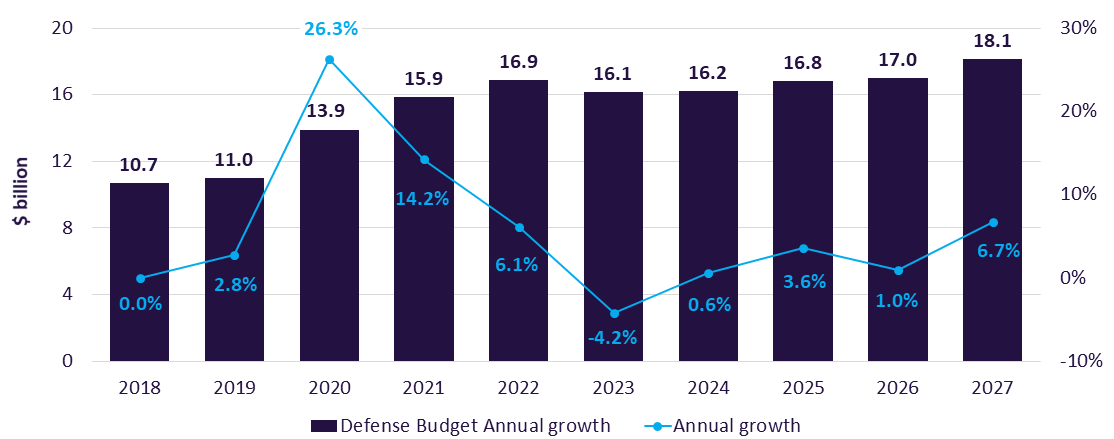Taiwan’s presidential elections will be held on January 13, 2024. Re-elected in 2020, the incumbent President Tsai Ing-wen cannot seek a third term.
Tsai’s Democratic Progressive Party (DPP) has been a divisive force that has benefited from President Obama’s pivot to Asia, Trump’s efforts at effective normalization and Biden’s attempt to capitalize on the consequent tensions to contain China’s economic rise regionally and globally.
But nothing in this election is what it seems to be.
DPP’s “American way”
After two consecutive terms, the incumbent Tsai resigned as DPP Chair in 2022, following the party’s poor performance in the local elections that caused great concern among the DPP leadership. Afterwards, Vice President Lai Ching-te (also known as William Lai) was “unanimously elected” to succeed her as the party chair.
Tsai beat Lai in the 2020 primary. To unify the DPP, Lai was then selected to be Tsai’s running mate. There was no primary.
A legal trade scholar, Tsai spent years in the United States and the UK prior to her political career. Similarly, Lai, a public health expert, studied in the U.S. Recently, he named Hsiao Bi-khim, Taiwan’s envoy to the U.S., as his running mate. Born in Japan, Hsiao grew up in Taiwan but moved to the U.S. as a teenager in the early ‘80s. A political operative, she became active in DPP in the U.S., not Taiwan. She renounced her U.S. citizenship only in 2000.
In brief, Tsai, Lai and Hsiao have, as they say, "very intimate ties" with Washington. That seems to be the new norm from Afghanistan and Iraq to Ukraine and Israel.
Presidential race
Officially, the presidential election is dominated by three candidates: Lai Ching-te representing the incumbent DPP; Ko Wen-je, a medical professor and the former mayor of Taipei, representing the center-left Taiwan People’s Party (TPP); and Hou Yu-ih, a police director and former mayor of New Taipei and of the major opposition party Kuomintang (KMT). Terry Gou, founder and ex-CEO of Foxconn, the world’s largest multinational electronics contract manufacturer, was also considered one of the “Big-4” in this election, running as an independent, but he recently withdrew from the race (Figure 1).
Figure 1 The Big-4


In campaign surveys, Lai’s dominance has been fairly steady. In early October, he garnered some 40% in the polls. Mid-year, TPP’s Ko was still second, taking some 25-30% of the vote. But his support has stagnated, whereas Kuomintang’s Hou has risen in polls.
Currently, Lai’s support is in the low-30s, whereas Hou and Ko each garner over 20%. Prior to his withdrawal, Gou barely reached 5%. From the number-crunching perspective, Lai will still win and DPP will retain its dominant position (Figure 2).
Figure 2 Taiwan’s election polls in mid-November 2023


What has complicated the projections has been Lai’s inability to raise his ratings, Hou’s steady strengthening in polls and Ko’s relatively strong support among young and first-time voters. And more importantly, the ongoing effort by the KMT and TPP to combine their ticket.
Frustrating quest for opposition unity
Taiwan’s opposition parties officially registered separate candidates for the elections on the November 24th filing deadline, just hours after an attempt to field a joint ticket against the DPP. United, its combined support could have amounted close to 50%.
In mid-November, TPP and KMT announced a plan for a single Ko-Hou joint ticket, with the order to be determined by opinion polls and publicly announced on November 19. Based on statistical analysis of the polls, the KMT felt the results favored a Hou/Ko ticket, but Ko refused to play second fiddle. He wanted the presidency or nothing.
The KMT/TPP joint ticket would have been DPP’s nightmare. The failed KMT/TPP unity is manna from heaven to DPP.
Currently, one of every three Taiwanese supports DPP’s highly confrontational policies toward China. Almost every second Taiwanese appears to prefer a less confrontational stance. The changing status quo is reflected by the tight legislative race. Currently, the DPP has a majority, but the party may fail to maintain its hold over the unicameral legislature (Yuan).
Taiwan’s escalating militarization
If tensions have escalated in the Taiwan Strait, much is due to Washington’s multi-billion-dollar military aid for Taipei in recent years, including an $8 billion deal to deliver 66 F-16 fighter jets by 2026.
In the past, U.S. stated policy toward Taiwan prioritized peace and stability across the Taiwan Strait. Today, the strategic objective seems to be the preemption of China’s economic rise. From Beijing’s perspective, the U.S. is exploiting Taiwan as a pawn in its grand chessboard, to undermine China.
These concerns and China’s large-scale military exercises in the area have intensified in parallel with U.S. military escalation. Between 1950 and 2022, Taiwan was the 4th largest purchaser in the U.S. foreign military sales; in 2020-22 combined, the largest (Figure 3).
Figure 3 Taiwan Arms Sales 1990-2022


In July, the Biden administration announced it would transfer $345 million in defense items to Taiwan, which were later coupled with $135 million via military financing programs. The latter are likely to include portable air defense systems, small arms munitions and reconnaissance equipment. Thanks to U.S. foreign assistance, Taiwan is also authorized to the Pentagon’s stocks up to $1 billion annually in defense articles, services and training.
In August, Taiwan announced plans to increase its total defense spending to a record $19.1 billion, equivalent to 2.6% of GDP. That outpaces NATO allies, such as the United Kingdom, France, Italy, and Germany (Figure 4).
Figure 4 Taiwan’s Defense Budget ($ bn) and Growth Rate (%)


However, all military expenditures have opportunity costs. And the cold reality is that with increasing militarization these costs are climbing, too.
Politics of distraction, economic traps
In the first half of the year, Taiwan’s GDP shrank, despite a rebound in the second quarter. The main risk to the outlook is persistently weak global demand, which continues to weigh on exports.
Worse, exports to China, which Washington seeks to isolate, have not picked up in recent months despite continuing rebound there. China remains Taiwan’s primary export market for electronic components, accounting for more than half of the total, and plays a critical role in a host of other sectors.
Still worse, any reconfiguration of supply chains in advanced technology, which the U.S. is promoting in the name of “national security,” can further dampen Taiwan's exports.
Bluntly put, the Taiwanese economy is heading toward a double-whammy. On the one hand, the DPP's leaders have pushed the island into the Pentagon's arms, which is penalizing the island’s economic futures. On the other, this very same effort is associating Taiwan with the West’s cost-of-living crises and secular stagnation.
In the late 20th century, Taiwan joined the newly-industrialized Asian dragons by focusing on economic development. But since 2016, the DPP has shifted the electorate’s focus toward geopolitics. Such politics of distraction can sideline but not overcome the impending economic landmines. You can't have your cake and eat it too.
In the past months, private consumption still bolstered growth, but the positive effects of loosened COVID-19 restrictions have waned and the export-oriented economy must now find new drivers of growth, as the Asian Development Bank recently suggested.
In Taiwan, the key challenge is to translate the economic frustration of the people into a viable political force. The current geopolitics is a recipe for national disaster with regional, or even global repercussions.